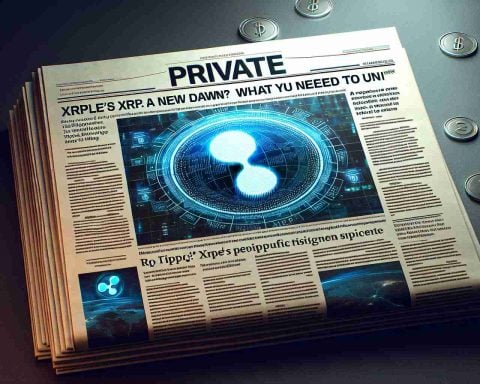In an exciting development for the digital finance world, Circle has entered a partnership with Sony Block Solutions Labs to boost the adoption of USDC, a prominent stablecoin, within the innovative Soneium Layer-2 blockchain network. This collaboration aims to integrate Circle’s new Bridged USDC Standard, which is designed to enable seamless digital dollar transactions across decentralized platforms.
Scheduled to go live in August 2024, Soneium is being touted as a public Layer-2 solution built on Ethereum technology, created through a partnership between Sony Group Corporation and Startale Labs. By incorporating the Bridged USDC Standard, developers will have a powerful tool in their arsenal, allowing them to leverage digital currency for various applications in the evolving Web3 space.
This partnership not only caters to developers looking to create decentralized applications (dApps) but also signals a broader commitment to enhancing the usability of blockchain technology for end-users. With a notable vision from Circle’s initiatives, the integration aims to facilitate user-friendly experiences in the digital marketplace.
Moreover, this collaboration comes amidst projections of a 47% increase in the supply of USDC in 2024, further solidifying its role within the competitive stablecoin landscape. As the Web3 ecosystem continues to grow, the partnership between Circle and Sony Block Solutions promises significant advancements in digital payments, reinforcing the expanding influence of stablecoins in the digital economy.
Circle and Sony Collaborate to Enhance Blockchain Payments with USDC: A New Era in Digital Transactions
In a pivotal move for the digital finance landscape, Circle has teamed up with Sony Block Solutions Labs to enhance the utilization of USDC, a leading stablecoin, within the innovative Soneium Layer-2 blockchain network. This partnership is set to integrate Circle’s groundbreaking Bridged USDC Standard, enabling frictionless digital dollar transactions across decentralized platforms.
Scheduled to launch in August 2024, Soneium is positioned as a public Layer-2 solution leveraging Ethereum technology. This initiative emerges from a collaboration between Sony Group Corporation and Startale Labs, which aims to create a robust infrastructure for various applications in the rapidly evolving Web3 environment.
Key Questions and Answers
1. What is the purpose of the Bridged USDC Standard?
– The Bridged USDC Standard aims to facilitate seamless transactions by allowing developers to incorporate USDC into their decentralized applications (dApps) more easily, bridging traditional finance with blockchain capabilities.
2. How will this partnership affect users?
– For end-users, this collaboration is expected to create a more user-friendly environment for digital transactions, making it easier to engage with blockchain technology and digital currencies, thus democratizing financial services.
3. What does the rise of USDC indicate for stablecoins?
– The projected 47% increase in USDC supply in 2024 signifies growing confidence in stablecoins and their increasing adoption, which could reinforce their status as a reliable digital currency option amidst market volatility.
Key Challenges and Controversies
Despite the promise that this partnership holds, several challenges remain. The integration of new technologies can often face resistance due to regulatory scrutiny. As governments worldwide grapple with cryptocurrency regulations, concerns about compliance with financial laws could affect the implementation of USDC and its integration into more mainstream use cases.
Additionally, the scalability of the Soneium network poses potential issues. Achieving widespread adoption necessitates not just technical efficiency but also building trust among users who may be skeptical about the security of digital transactions. Furthermore, the impacts on traditional financial systems, including competing interests from established banking entities, may lead to tensions and challenges in this collaborative ecosystem.
Advantages and Disadvantages
Advantages:
– Increased Accessibility: The partnership promises to enhance the accessibility of digital currencies for developers and end-users alike, promoting financial inclusion.
– Technological Innovation: By leveraging advanced blockchain technology, developers can create more efficient and innovative financial solutions.
– Stability of USDC: The alignment with a stablecoin like USDC could reduce volatility concerns present in other cryptocurrencies, fostering a more stable environment for everyday transactions.
Disadvantages:
– Regulatory Uncertainty: The evolving landscape of cryptocurrency regulations may pose risks, leading to potential legal hurdles.
– Dependency on Technology: Users will need to be technologically savvy to participate fully, potentially alienating less experienced users.
– Market Competition: With numerous stablecoins and payment solutions emerging, standing out in a crowded market poses significant challenges.
The partnership between Circle and Sony Block Solutions marks a significant step toward enhancing the digital payment landscape through blockchain technology. As the ecosystem expands, stakeholders will need to navigate the opportunities and challenges presented by technological advancements and regulatory frameworks in the world of stablecoins.
For more information on blockchain innovations and cryptocurrency developments, visit Circle and Sony.
















